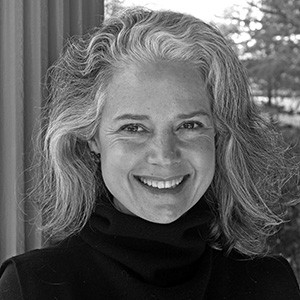Liza Gilbert

Liza Gilbert’s interest in landscape architecture began in Italy with her first job. The pivotal experience of working in Rome for Giannini/Vagnetti Architects opened her imagination to the deep history, meaning, and possibility of the profession and its impact on shaping how we see and inhabit our worlds. She continued to investigate cities, landscape, and history after graduating from Harvard’s Graduate School of Design, working in the offices of Doug Reed, Judith Heintz, and Michael Van Valkenburgh. Committed to enriching the urban environment, Ms. Gilbert served on the board of Dancing in the Streets, a New York-based arts organization dedicated to the presentation of performing arts in public sites, from 2004 to 2009. For the past decade, she has served on the board of the Dumbarton Oaks Park Conservancy, a public-private partnership formed in 2010, working in concert with the National Park Service to save Dumbarton Oaks Park, the 27-acre ‘wild garden’ designed by Beatrix Farrand in Washington, D.C. Ms. Gilbert also had the honor to serve on the U.S. Commission of Fine Arts from 2014 to 2019.
Statement: I had the pleasure of meeting Cornelia Hahn only once. It was unforgettable. She came to Dumbarton Oaks Park early one spring day in 2014. Walking and observing the 27-acre Farrand masterwork with her was like shadowing a wood sprite. She knew the design well but was seeing it though fresh eyes, as it was unveiling itself anew. Spring was unfurling, and she was eager to discover which plants were emerging after a long winter’s nap. As we approached a timber-plank bridge, she skipped across with glee and exclaimed, “What a thrill!”. A frisson of excitement shot through me, and I was reminded of why we all are committed to protect, sustain, and build landscapes; a deep emotional connection to place. All our collective stories are embedded in these places, and Cornelia and her work inspire through a contagious passion for seeing and re-seeing that power. The numerous landscapes she had created over the last century underscore the many others designed and imagined by the hundreds of us who come to celebrate her through this prize. May we, and the many hundreds to follow, continue to build on Cornelia’s body of work and maintain her sense of wonder and optimism in the face of the increasingly complex environmental issues that lie ahead.



